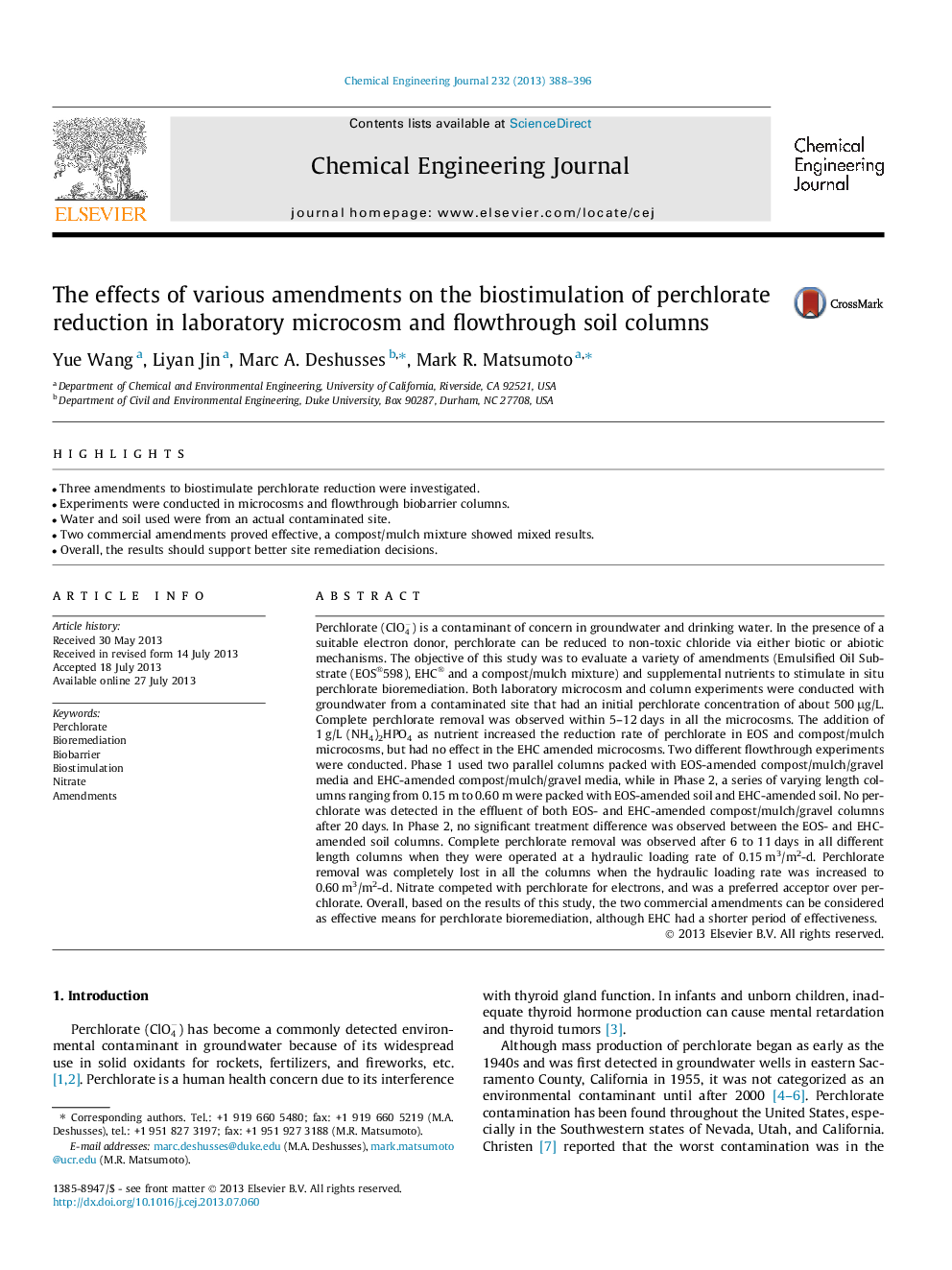| کد مقاله | کد نشریه | سال انتشار | مقاله انگلیسی | نسخه تمام متن |
|---|---|---|---|---|
| 148151 | 456406 | 2013 | 9 صفحه PDF | دانلود رایگان |

• Three amendments to biostimulate perchlorate reduction were investigated.
• Experiments were conducted in microcosms and flowthrough biobarrier columns.
• Water and soil used were from an actual contaminated site.
• Two commercial amendments proved effective, a compost/mulch mixture showed mixed results.
• Overall, the results should support better site remediation decisions.
Perchlorate (ClO4-) is a contaminant of concern in groundwater and drinking water. In the presence of a suitable electron donor, perchlorate can be reduced to non-toxic chloride via either biotic or abiotic mechanisms. The objective of this study was to evaluate a variety of amendments (Emulsified Oil Substrate (EOS®598), EHC® and a compost/mulch mixture) and supplemental nutrients to stimulate in situ perchlorate bioremediation. Both laboratory microcosm and column experiments were conducted with groundwater from a contaminated site that had an initial perchlorate concentration of about 500 μg/L. Complete perchlorate removal was observed within 5–12 days in all the microcosms. The addition of 1 g/L (NH4)2HPO4 as nutrient increased the reduction rate of perchlorate in EOS and compost/mulch microcosms, but had no effect in the EHC amended microcosms. Two different flowthrough experiments were conducted. Phase 1 used two parallel columns packed with EOS-amended compost/mulch/gravel media and EHC-amended compost/mulch/gravel media, while in Phase 2, a series of varying length columns ranging from 0.15 m to 0.60 m were packed with EOS-amended soil and EHC-amended soil. No perchlorate was detected in the effluent of both EOS- and EHC-amended compost/mulch/gravel columns after 20 days. In Phase 2, no significant treatment difference was observed between the EOS- and EHC-amended soil columns. Complete perchlorate removal was observed after 6 to 11 days in all different length columns when they were operated at a hydraulic loading rate of 0.15 m3/m2-d. Perchlorate removal was completely lost in all the columns when the hydraulic loading rate was increased to 0.60 m3/m2-d. Nitrate competed with perchlorate for electrons, and was a preferred acceptor over perchlorate. Overall, based on the results of this study, the two commercial amendments can be considered as effective means for perchlorate bioremediation, although EHC had a shorter period of effectiveness.
Journal: Chemical Engineering Journal - Volume 232, October 2013, Pages 388–396